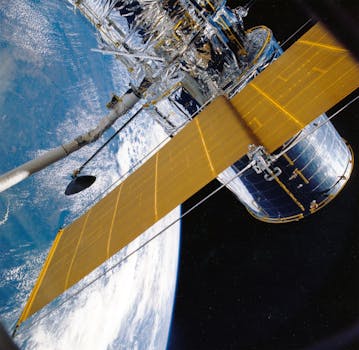
Beyond Earth: How Recent Advances Are Shaping Satellite Telecommunications
Beyond Earth: How Recent Advances Are Shaping Satellite Telecommunications. The field of satellite telecommunications has witnessed significant growth and advancements in recent years, revolutionizing the way we communicate and access information beyond Earth’s surface. With the increasing demand for global connectivity, satellite telecommunications has become a vital component of modern communication systems. In this article, we will delve into the recent advances that are shaping the future of satellite telecommunications.
Introduction to Satellite Telecommunications
Satellite telecommunications involves the use of artificial satellites in orbit around the Earth to transmit and receive signals, enabling communication between different locations on the planet. The technology has been around for decades, but recent advances have made it more efficient, reliable, and accessible. Satellite telecommunications has numerous applications, including telecommunications, navigation, weather forecasting, and remote sensing.
Recent Advances in Satellite Telecommunications
Several recent advances have transformed the satellite telecommunications industry. One of the most significant developments is the launch of high-throughput satellites (HTS), which offer faster data speeds and greater capacity than traditional satellites. HTS have enabled the widespread adoption of satellite-based broadband services, providing internet access to remote and underserved communities. Another significant advancement is the development of low-Earth orbit (LEO) satellites, which operate at lower altitudes and offer lower latency and higher throughput than traditional geostationary satellites.
Impact of Recent Advances on the Industry
The recent advances in satellite telecommunications have had a profound impact on the industry. The increased capacity and speed offered by HTS and LEO satellites have enabled new applications and services, such as satellite-based 5G networks and IoT connectivity. The reduced latency and higher throughput have also improved the overall user experience, making satellite telecommunications a more viable option for a wide range of applications. Furthermore, the development of reusable launch vehicles has significantly reduced the cost of launching satellites into orbit, making it more accessible and affordable for companies and organizations to develop and launch their own satellite constellations.
Conclusion
In conclusion, recent advances in satellite telecommunications are shaping the future of the industry. The development of HTS, LEO satellites, and reusable launch vehicles has transformed the way we communicate beyond Earth’s surface. As the demand for global connectivity continues to grow, satellite telecommunications will play an increasingly important role in providing access to information and communication services. With ongoing innovations and advancements, the future of satellite telecommunications looks promising, and we can expect to see even more exciting developments in the years to come.


